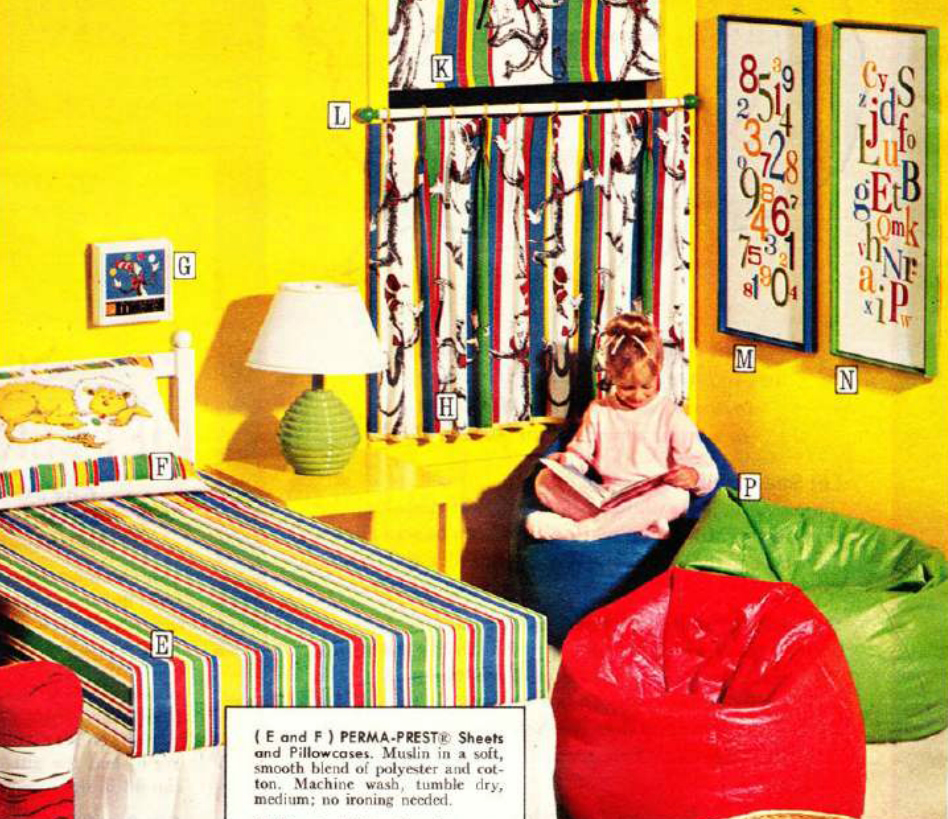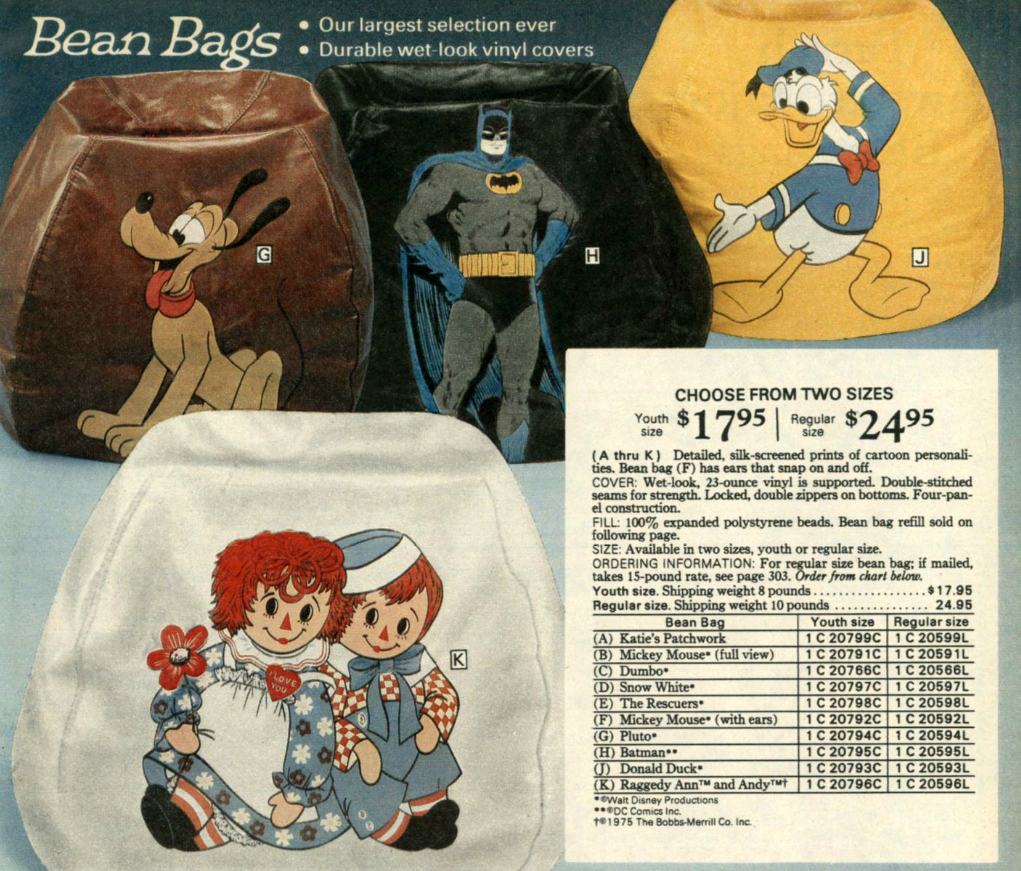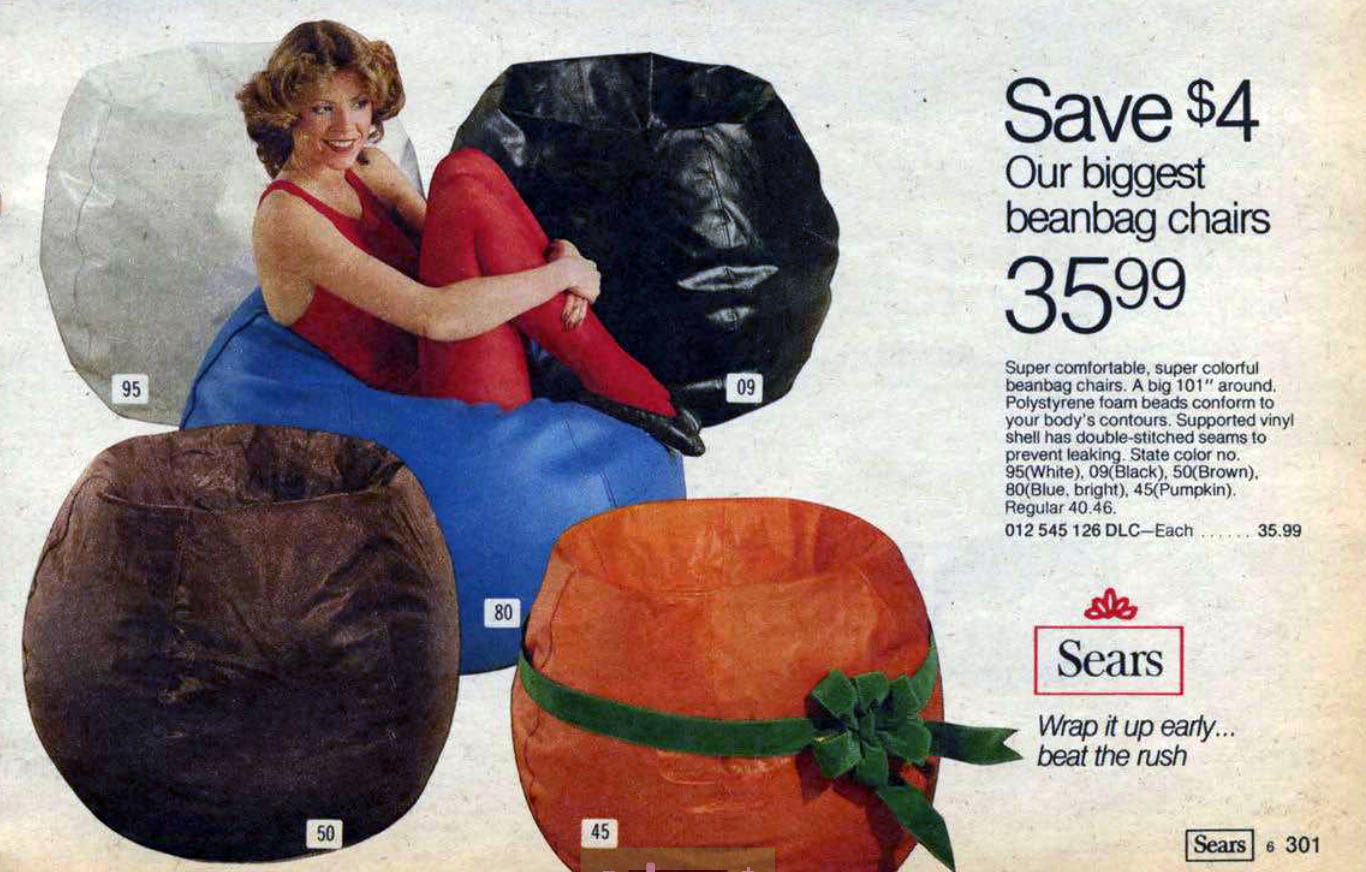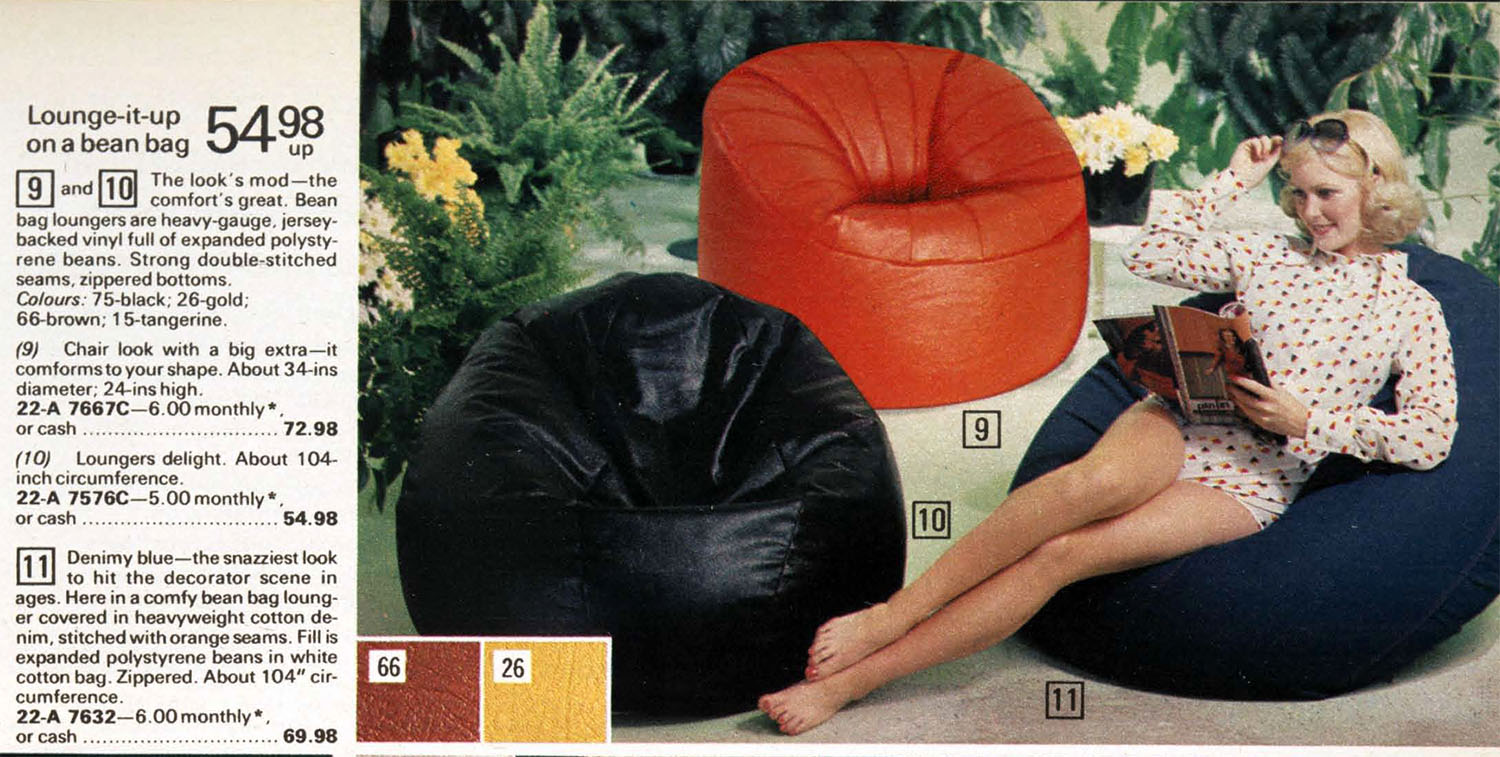
The bean bag chair has its origin in 1968 as Sacco, “the shapeless” chair. It was the creation of three Italian designers (Piero Gatti, Cesare Paolini and Franco Teodoro) who marketed their new chair to “the lax, hippie community and their non-conformist household”.
There were a few earlier versions of the chair. One was called the “Sea Urchin Chair” designed by Roger Dean at the Royal College of Art in 1965; but it was foam, and doesn’t quite look like the bean bag chair we know and love today. Another was called “Blow”, but it couldn’t hold its shape. So, these designers improved its stitching and used a leather exterior. It was an immediate success:
“In an era characterized by the hippie culture, apartment sharing and student demonstrations, the thirty-something designers created a ‘non-chair’ and thus launched an attack on good bourgeois taste.” – The Vitra Design Museum
Like so many things popularized by the counter-culture, it eventually went mainstream, appearing in Sears and JC Penney catalogs. Being just a big sack of Styrofoam, it wasn’t patented, so the market saw a flood of bean bag chairs from all sorts of manufacturers. Let’s have a look at some images of the many progeny of Sacco: The Shapeless Chair.
The JC Penney “Smuggle Bag Chair”
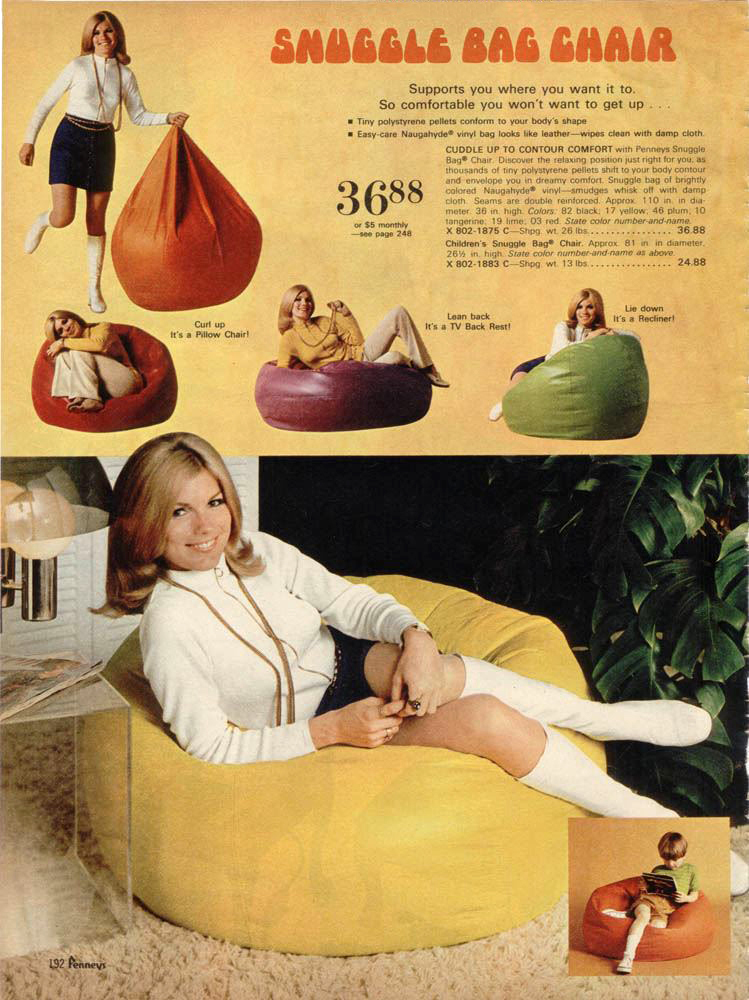

1975 Wards Christmas Catalog
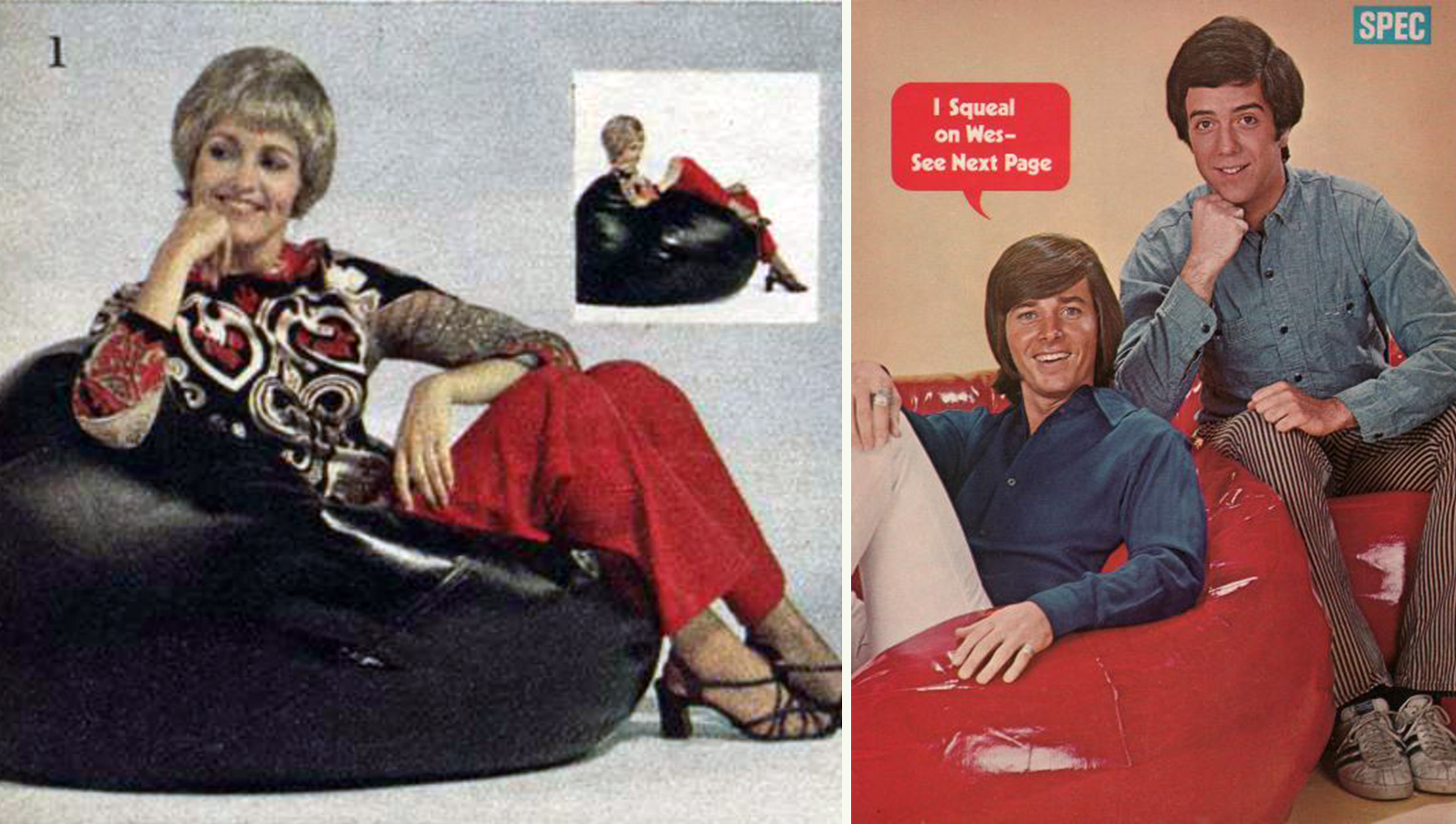
(L) 1972 Spiegel Christmas Catalog, (R) Bobby Sherman and Wes Stern
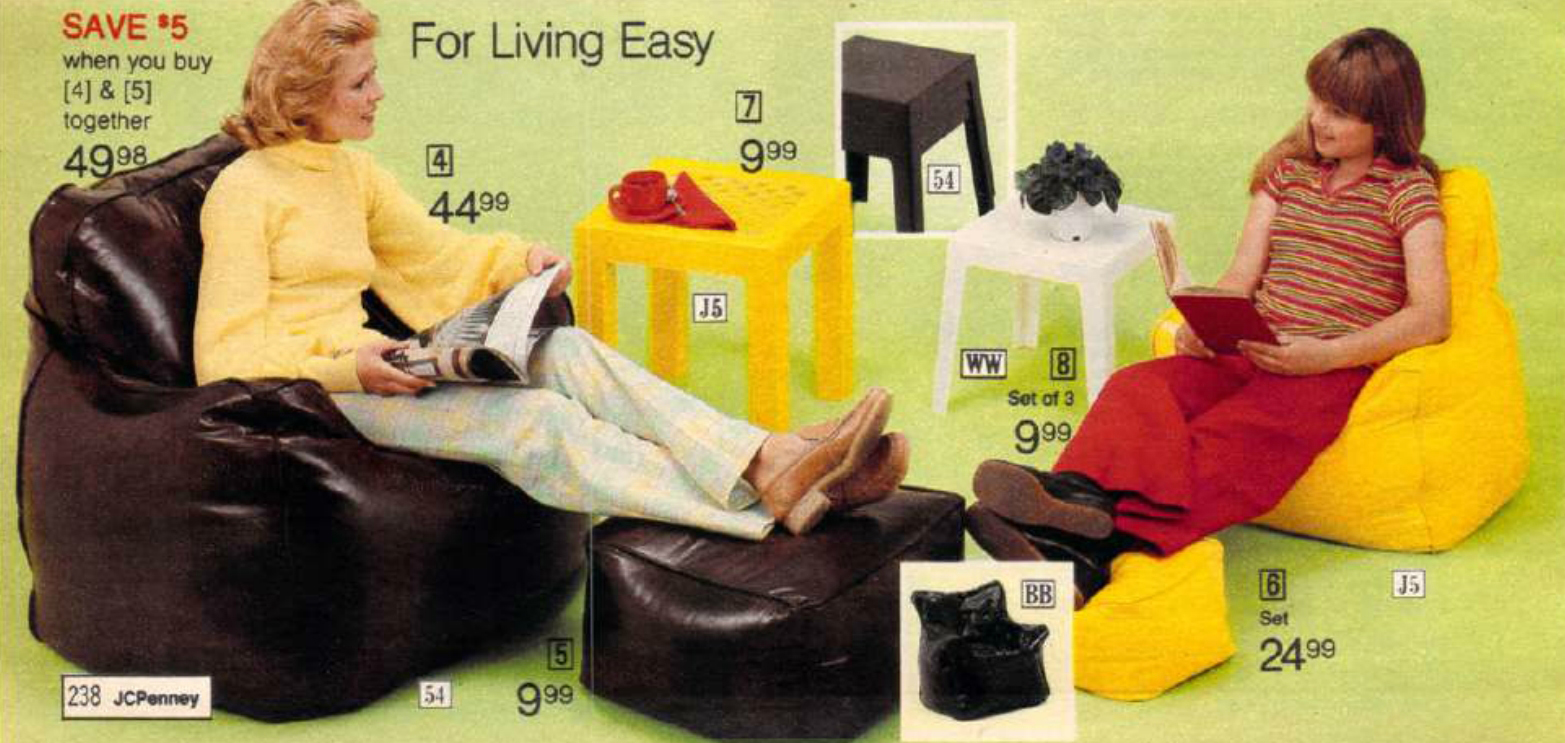
1977 JC Penney Catalog
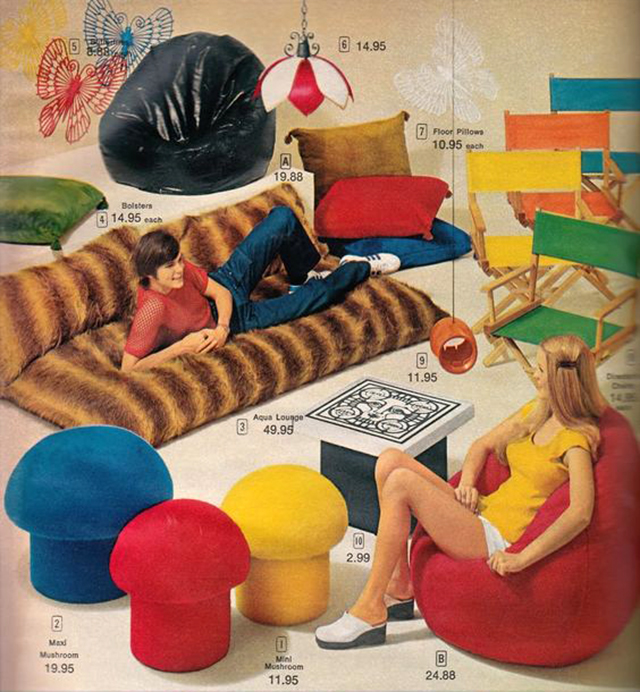

The high water mark in the history of the bean bag chair: The Farrah from the 1977 Sears catalog
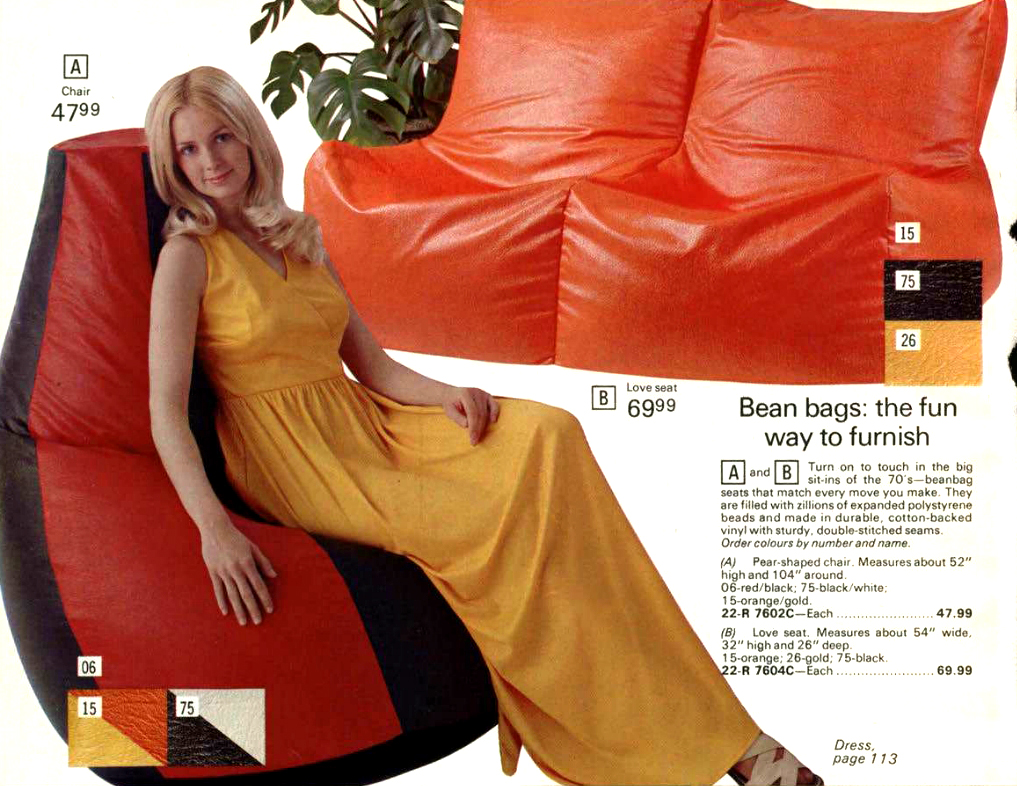
1973 Eatons Christmas Catalog
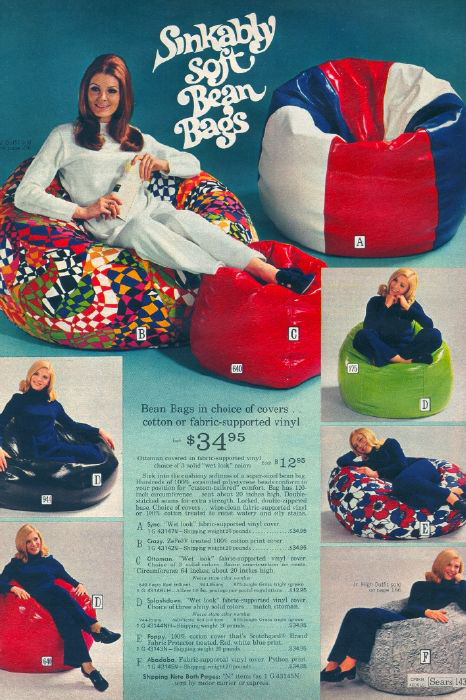
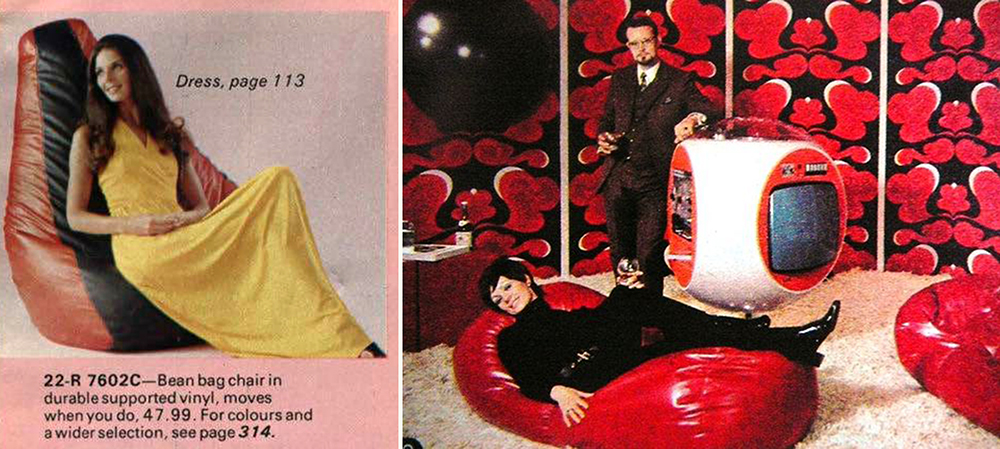
(L) 1973 Eatons Christmas Catalog
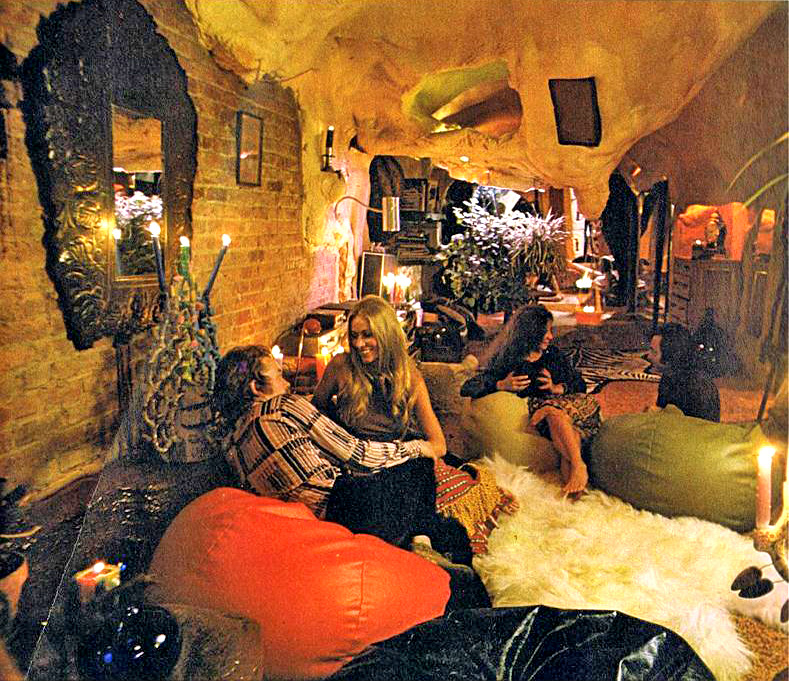
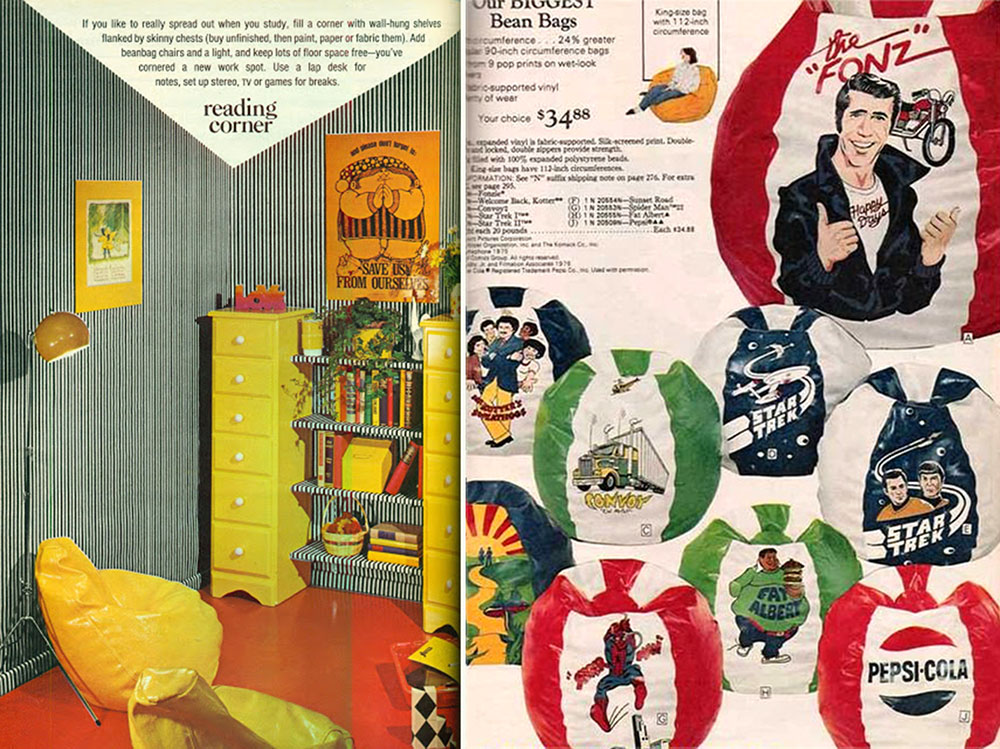
For more funky chair posts, see The Egg Chair
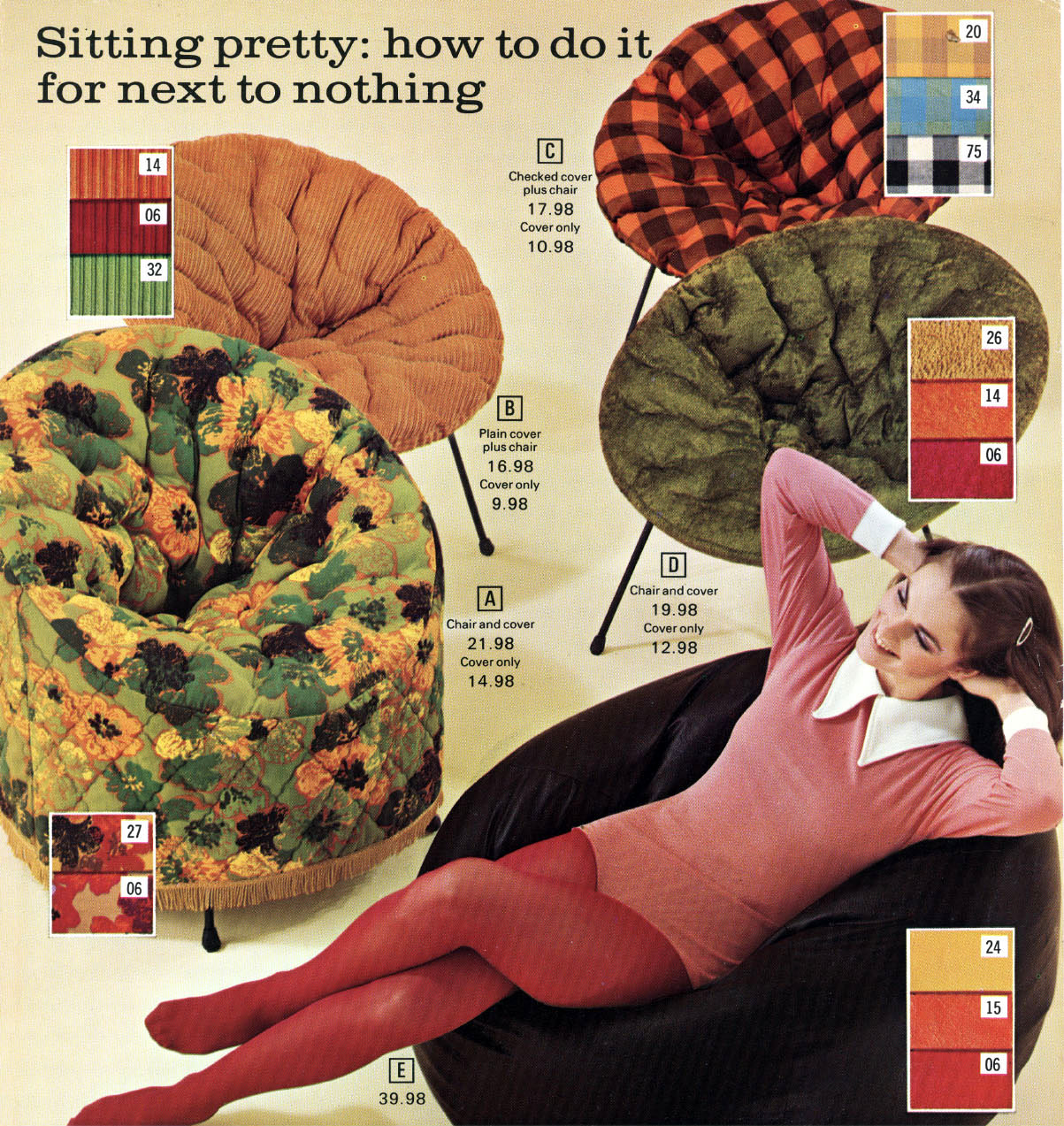
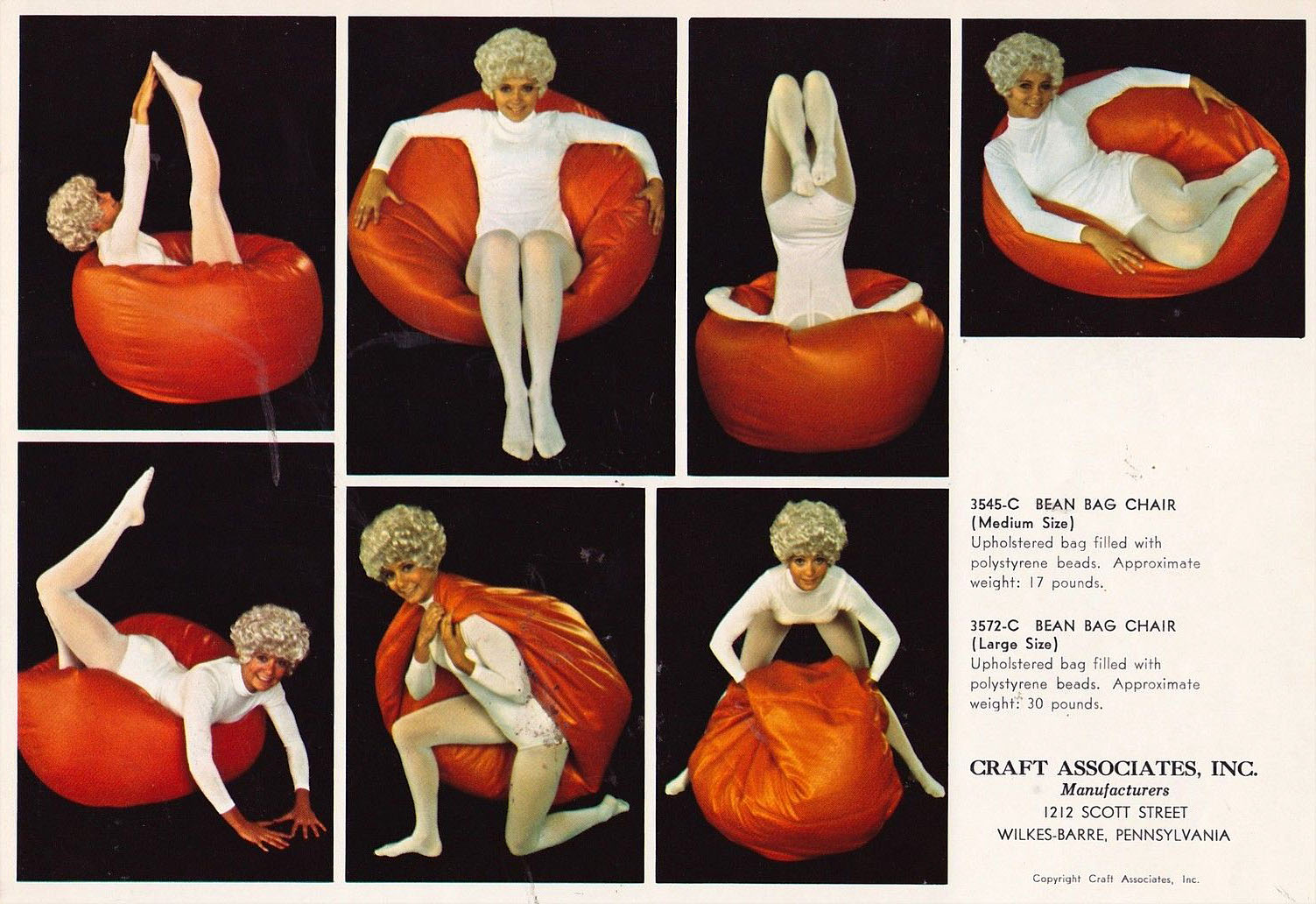
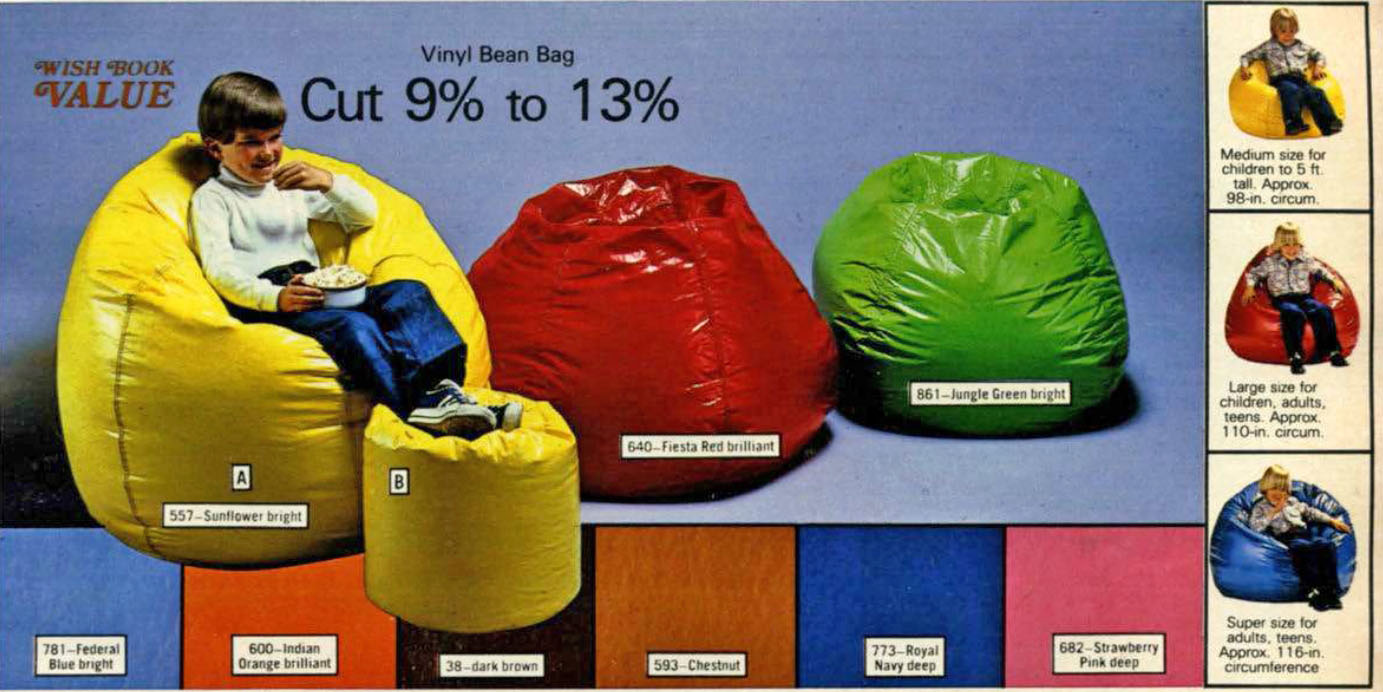
1983 Sears catalog
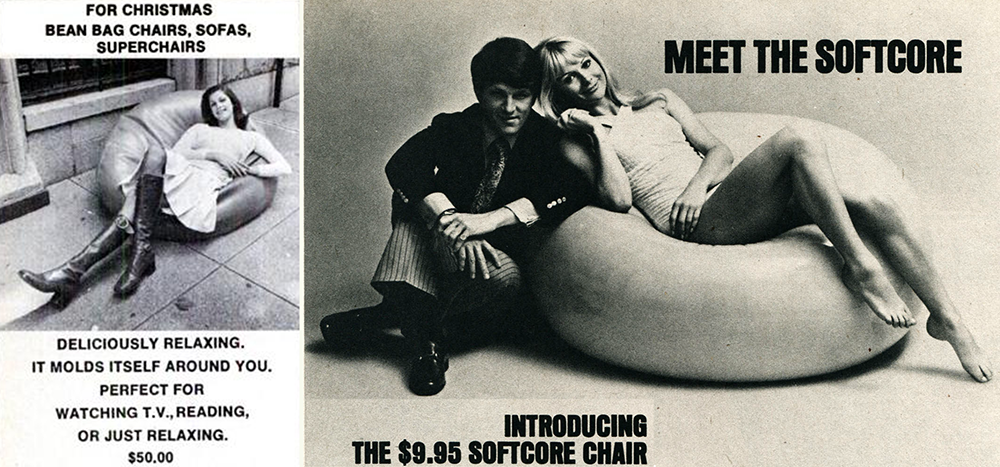

1977 JC Penney Catalog
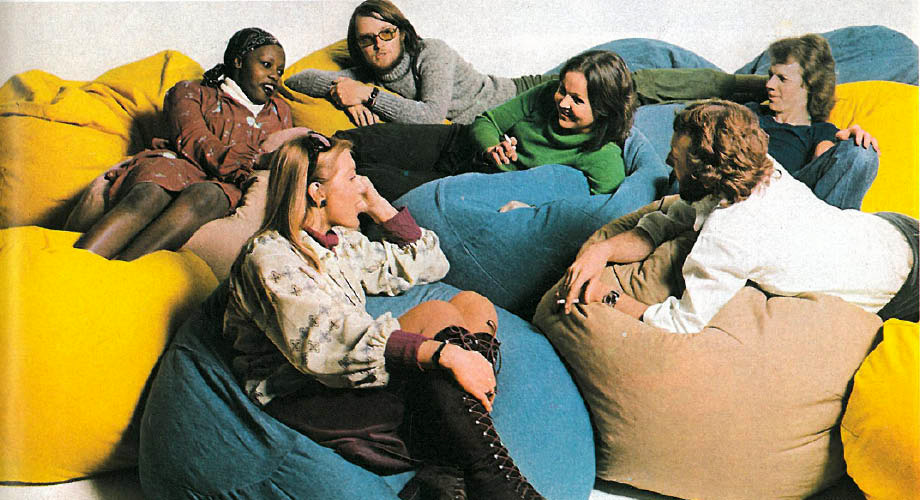
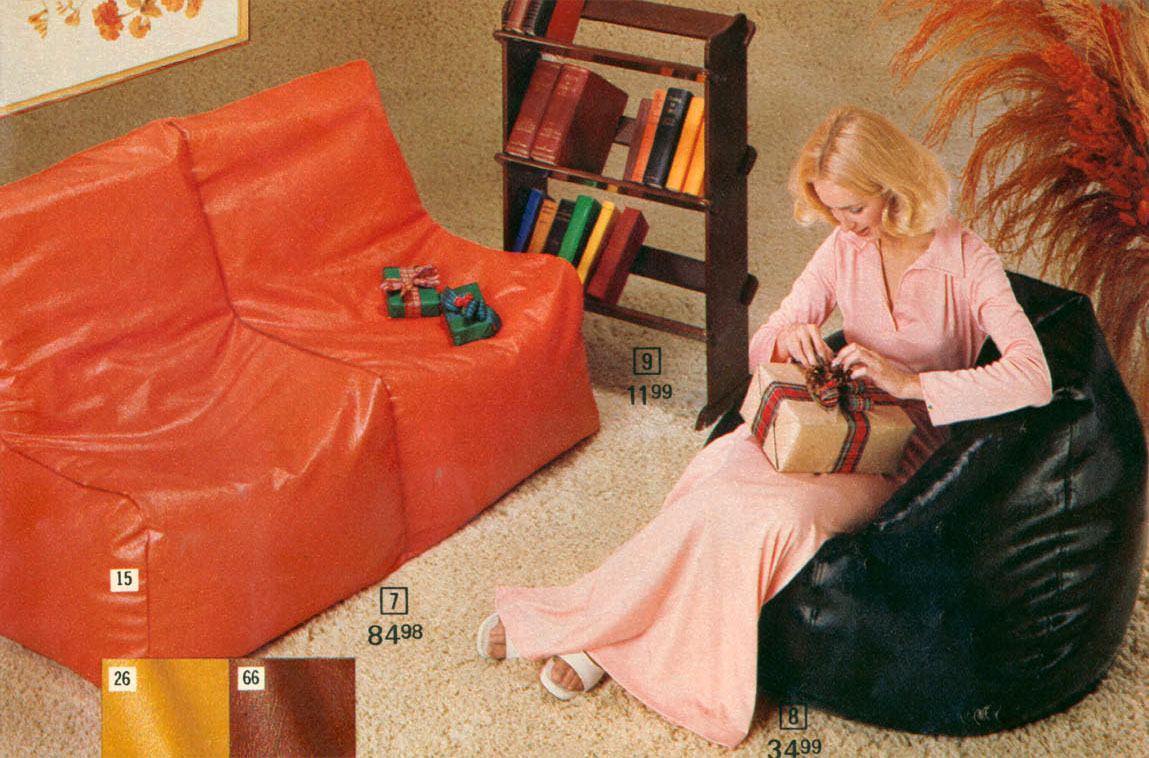
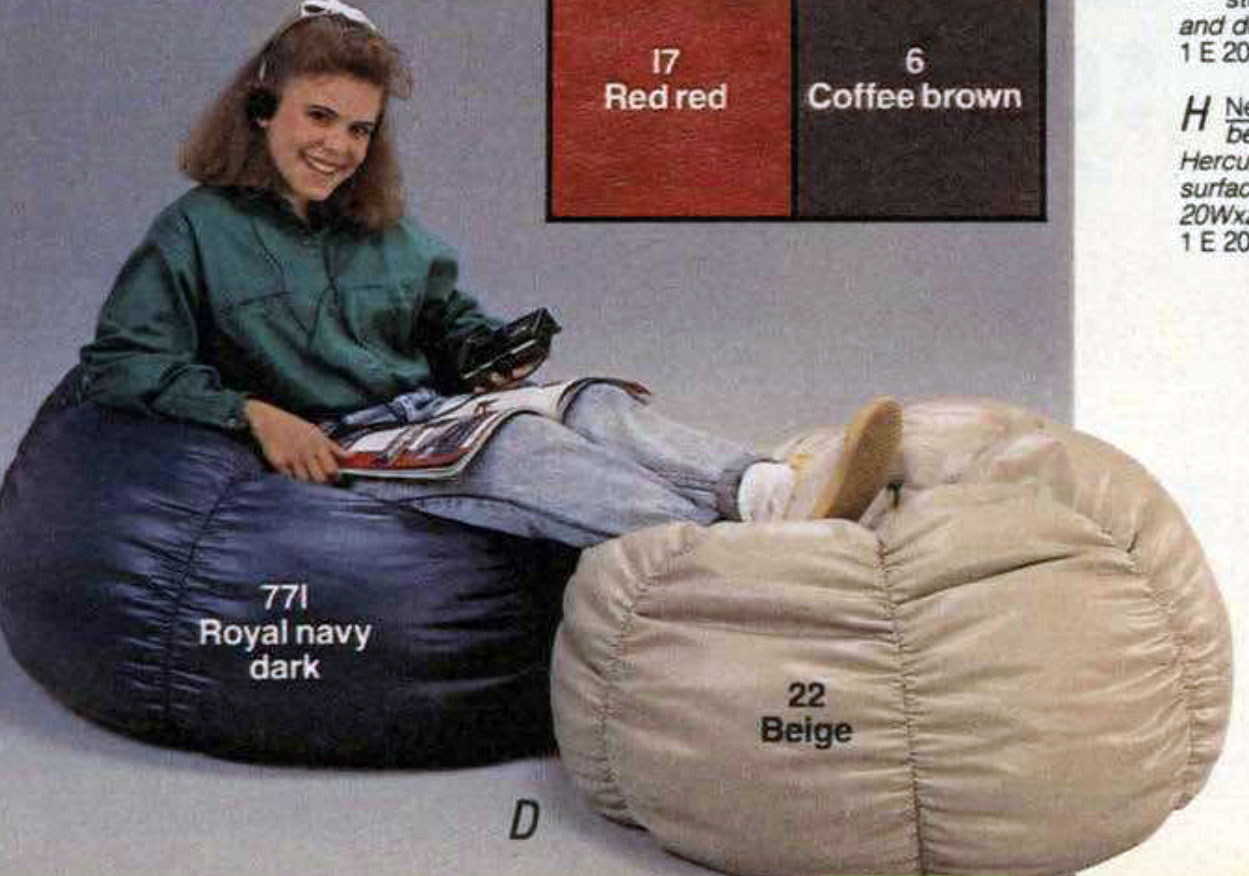
1988 Sears Catalog
Would you like to support Flashbak?
Please consider making a donation to our site. We don't want to rely on ads to bring you the best of visual culture. You can also support us by signing up to our Mailing List. And you can also follow us on Facebook, Instagram and Twitter. For great art and culture delivered to your door, visit our shop.

